India's Third Giant Leap
This Could be One of the Biggest Opportunities for Investors
The Best Long Term Stocks in India

Many speeches and anecdotes by Charlie Munger have created a strong impression in my mind. The lollapalooza effect is one of them.
It's an intriguing word indeed. But the phenomenon it describes is even more interesting.
It suggests that when multiple forces act in the same direction, they don't just add up. Each force builds off and strengthens the other, creating an explosive effect with huge results.
In other words, one plus one makes eleven.
Munger explained it the best using the example of Coca Cola.
Coca Cola's success seems like a product of its first mover advantage combined with a secret recipe for aroma, flavour, texture, and stimulus (sugar and caffeine) that induces pavlovian conditioning.
But it was a confluence of multiple other factors creating a lollapalooza effect that go into its success formula.
First, is it's legally protected trademark, that differentiated it from other generic drinks.
Second, it's a drink with universal appeal, that would assimilate about one fourth of the world's water ingestion.
The other factors were to create a presence that allows the drink to be within everyone's arm's reach, and within everyone's purchasing power.
Along with Apple Inc., Bank of America, Chevron Corporation, & American Express, Cola Cola still accounts for almost 75% of Warren Buffett's portfolio. Needless to say, it's been a big factor in the making of the investing legend.
By identifying lollapalooza effects and investing in them in time, you can create huge wealth.
And I do see one lollapalooza phenomenon happening in Indian stock markets right now.
I'm speaking of multiple factors getting along to trigger a strong capex cycle.
Last time it happened during 2003-2007/08, the Indian stock markets (Sensex) witnessed 7x gains. It would not be an exaggeration to call it a generational wealth making opportunity.
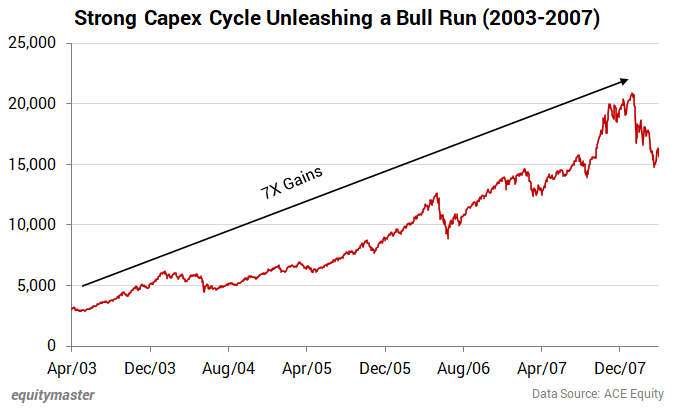
What followed this phase was a lost decade for infrastructure and capex, as excesses during the above phase ultimately aborted the cycle.
Also, while the decade witnessed many false starts, what was missing was the confluence of factors to sustain a capex and infra cycle.
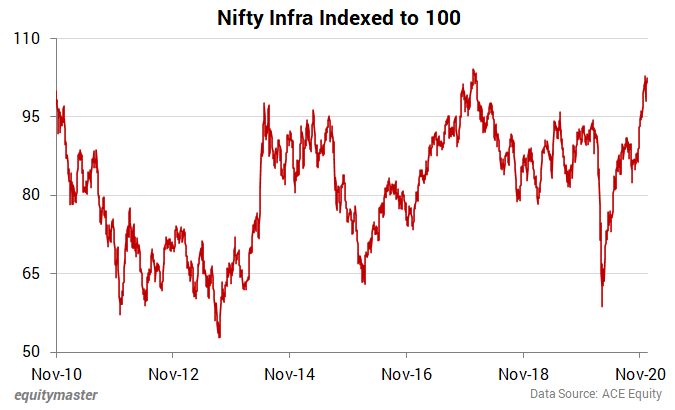
But this time could be different.
That's because multiple factors, from a policy standpoint, geopolitical factors (China plus one), credit disbursement, and most importantly, private capex and corporate health, seem to be in perfect alignment to make this happen.
Let's take a look at these factors one by one.
First, the government's thrust on capex. In 2022-2023, the capex outlay in the Union Budget was at Rs 7.5 trillion (tn). This was 35% higher than the preceding year.
In FY23-24, the capex outlay is at Rs 10 tn, up 33% over last year. As compared to FY17, the rise has been almost 4x.
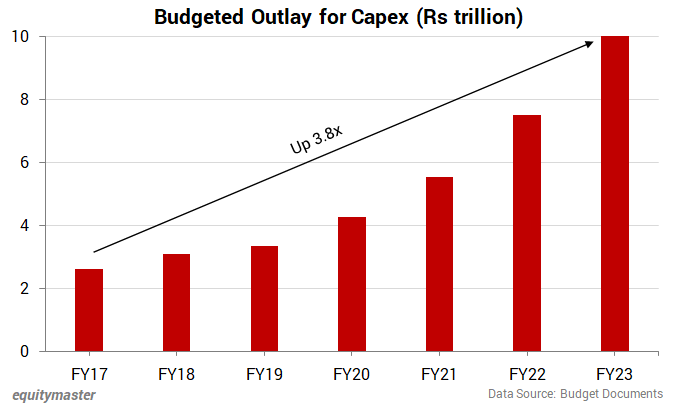
It's not just the absolute numbers. The capex to GDP ratio is much higher than the average in last decade. This could have significant multiplier effects on the economy, across sectors.
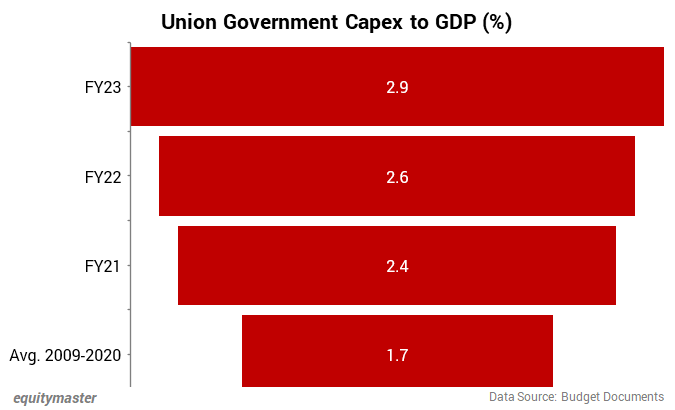
So, could we be looking at a phenomenon similar to what happened in 2003 to 2008? Let's take a look at a few more variables to assess that.
You see, banks and financial institutions need to be enablers with enough supply of credit and liquidity for capital investments to be unleashed.
In 2003-2008, credit growth was around 20%.
This has moved up from 5.2% in March 2021, to 8% in January 2022 and up to 16.5% in January 2023. This time, its coming close to the levels of the last cycle, with a sharp acceleration in the past two years.
It's after a period of eight years that such loan growth has been witnessed, now that the banking system has been through a kind of detox and cleansing.
Its health seems to be in a better shape than at the time of onset of 2003 capex cycle. As per the financial stability report for December 2022, the gross NPAs currently stand at six year low of 6.9%.
In the year 2003, the gross NPA level was over 10% for PSU banks and at 8.9% for Private sector banks.
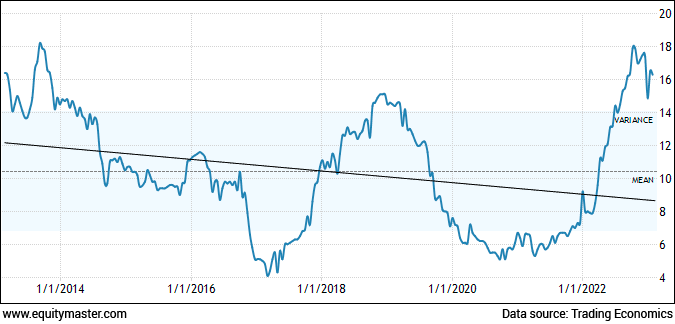
Fair to say that the external environment and conditionalities have been met for capex revival and for the private sector to participate in the same.
But is India Inc ready to rise to this opportunity?
The answer seems to be a resounding 'yes'.
For one, the leverage level for India Inc. is at decadal lows. For BSE 500 Non finance companies, the debt to equity ratio stands at 0.7 times at the end of FY22.
It's worth mentioning that the same was higher than one at the start of 2003 cycle.
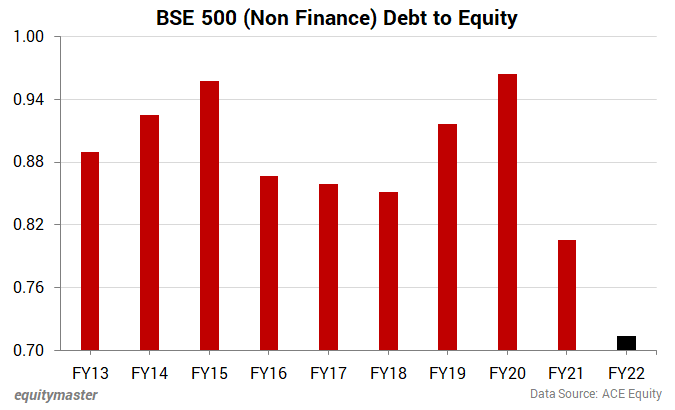
And it's not just the balance sheets that are much sturdier and robust for a private capex set up. Even on the cash flow front, India Inc. is at decadal highs, as indicated by the blue bars.
What this suggests is better affordability to fund the capex and future growth. And the need for less reliance on borrowed capital to expand.
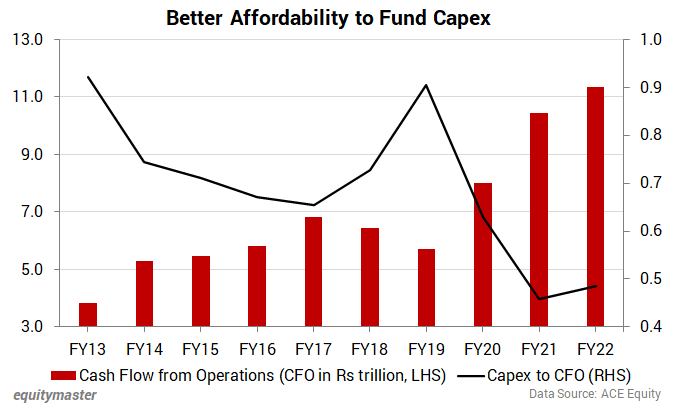
India Inc is well prepared and is investing. The internal cash generation is healthy and the demand outlook seems promising from the robust order books.
The capacity utilisation in manufacturing segment is at 74% and even higher in core segments suggesting sustained economic activity.
Banks and financial institutions are happy to lend. The private capex is indeed gaining momentum, again touching multi year highs. As per bank survey reports, the capex for first half of FY23 is already at Rs 3.3 tn, highest in last four years and up 27% year on year.
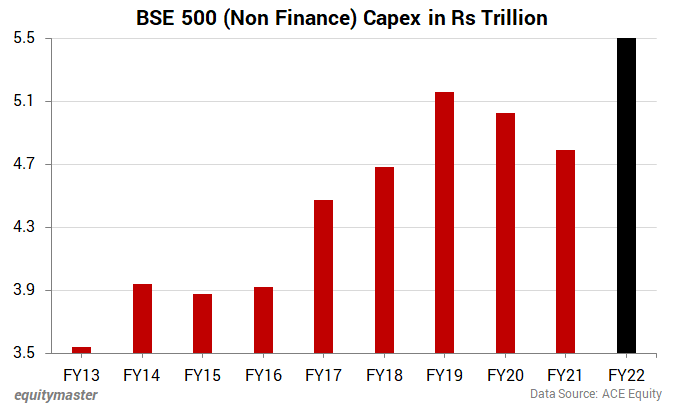
And remember, this private capex cycle has only turned recently.
There's a stable government at the centre and the right policy push with schemes such as PLI or production linked incentives, indigenisation, the focus on strategic infrastructure such as railways, roadways, ports, defence and power, along with tax cuts, corporate tax down to 25% from 34%, and not to mention strong demographics, the runway seems long and promising.
However, I would not recommend road or highway construction companies, or players that are leading from the front.
I would rather focus on companies where capex cycle drives earnings more than just asset creation, i.e., on companies that are relatively asset light, have strong balance sheets and do not need to take external borrowings to ride the capex revival.
It would be a positive if these are also the market leaders in their domain, or have some kind of strategic edge over the other players.
Basically, to be on the right side of this capex bet, I would be focusing on companies that are suppliers to the entire industry and not to one specific company.
It's even better if the business is diversified across geographies or has diversified end applications independent of each other, and where there is a good replacement demand as well.
Further, look for companies where the stock has enough liquidity to minimize damage in case of unforeseen risks.
Watch my video below to know more about companies that I believe would be strong beneficiaries of capex and infra cycle.
Now there is a concern if capex revival could be derailed by interest rate hikes.
I think that the global interests rates, when they were at near zero levels, did not do much for the investment and capex cycle in India.
Further, from 2003 to 2007, Fed rate had increased from 1.2% to 5.3% in June 2007. It was below 5% in 2008. And in this rising rate scenario too, the Indian capex cycle was in its full swing.
To conclude, I don't think a gradual rise in interest rates could threaten the revival story. If anything, it should add more depth, longevity and prudence to the cycle, with corporates not just raising money or undergoing expansions because the capital looks cheap, but because it makes sense from a productivity perspective.
In fact, it could avoid the conditions that led to excesses in the previous cycle, eventually slowing it down.
That said, any unexpected credit event, which can not be predicted remains a risk.
Hence, if you are looking at this theme with multibagger potential, do keep in mind the asset allocation guidelines.
Warm regards,
Richa Agarwal
Editor and Research Analyst, Hidden Treasure
Recent Articles
- A Unique Smallcap Stock for Your AI Watchlist November 22, 2024
- AI is the future, whether or not you are ready for it. To avoid missing out, here is a stock for your watchlist.
- Why the Stock of Sanghvi Movers Should be on Your 2025 Watchlist November 21, 2024
- This smallcap stock is a good proxy play for the wind energy megatrend.
- Is Innovation Already Priced into Siemens India's PE Ratio of 100? November 20, 2024
- Siemens India's 100x PE an indicator of economic buoyancy or market froth?
- 20 Stocks to Watch in 2025 November 19, 2024
- Your guide for putting together a watchlist of stocks for 2025.
Equitymaster requests your view! Post a comment on "The Best Long Term Stocks in India". Click here!
3 Responses to "The Best Long Term Stocks in India"
Sanjeev Kulkarni
Jun 21, 2023Sir
There seems some problem
Even after writing my mail id
I could not forward it to you
You are requested to keep me mailing your daily newspaper and all free literature too
I am interested
Thanks
With regards
Sk


ASHWIN PATEL
Jul 4, 2023I am very much interested this lolaapalooza effect theory